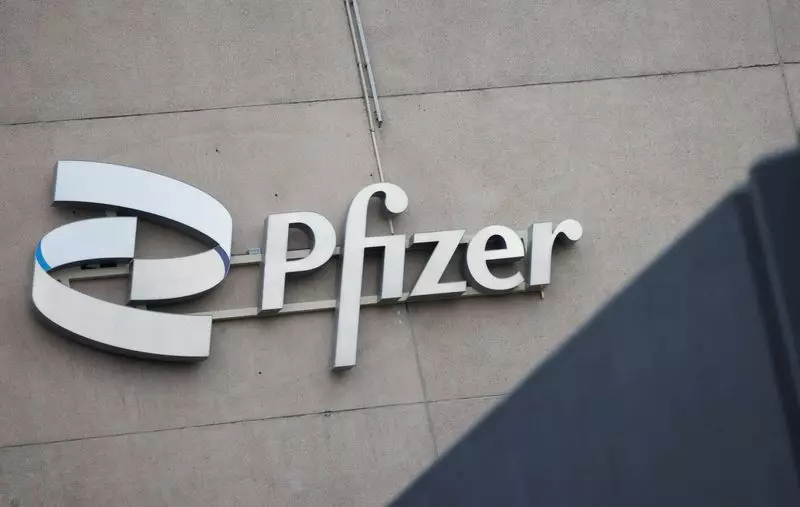Sickle cell disease (SCD) poses significant challenges to both patients and the medical community. It affects approximately 100,000 individuals in the United States, predominantly within the African American community. The disease is characterized by the deformation of red blood cells into a crescent or sickle shape, leading to complications including severe pain crises, organ damage, and stroke. Recent developments regarding Pfizer’s decision to withdraw its treatment for this condition, Oxbryta, have stirred discussions about the future of SCD therapies and the competitive landscape of pharmaceutical companies working on new solutions.
On a pivotal Wednesday, Pfizer announced its withdrawal of Oxbryta, once considered a groundbreaking treatment under its portfolio. Initially approved through an expedited process by the U.S. Food and Drug Administration (FDA) in 2019, Oxbryta was aimed at patients with mild to moderate symptoms. However, recent scrutiny from the European Medicines Agency (EMA) led to serious safety concerns following reports of mortality in clinical trials. In light of this troubling information, the EMA deemed it necessary to recommend the immediate suspension of Oxbryta’s authorization.
This withdrawal did not occur in a vacuum. It reflects a growing concern among regulators regarding patient safety, and the potential consequences it could have on the competitive landscape of SCD treatments. Analyst insights suggest that the absence of Pfizer’s treatment could create urgency for trial programs of alternative therapies, presenting a unique opportunity for companies like Agios Pharmaceuticals and Fulcrum Therapeutics to accelerate their respective drug trials.
With Oxbryta’s exit from the market, the environment appears ripe for other medications to fill the void. Agios’s mitapivat and Fulcrum’s pociredir are eyeing potential accelerated approvals in light of the vacated space. The need for innovative treatments persists, as the majority of SCD patients relying on Oxbryta may now resort to chemotherapy options, such as hydroxyurea, especially when both mitapivat and pociredir target various aspects of the disease.
Piper Sandler analysts have posited that the current climate will likely prompt regulatory bodies to hasten their review processes, particularly for promising therapies like mitapivat, should it prove effective in alleviating the painful episodes integral to SCD. This would mark a considerable shift in the management of the disease, offering hope for patients who have recently lost access to alternatives.
The financial implications of this scenario are noteworthy. Following Pfizer’s announcement, shares of Agios and Fulcrum saw marked increases, with Agios rising by 4% and Fulcrum by over 20%. This stock response underscores a market sentiment influenced by the growing need for alternative therapies. Investors are adjusting their expectations as companies pivot towards competing in a potentially less crowded market landscape following the Oxbryta withdrawal.
Importantly, the transition emphasizes a broader trend within the pharmaceutical industry that is shaped by regulatory dynamics and patient needs. As patients continue to await effective treatments for mild-to-moderate SCD, the performance and results of ongoing trials will draw increasing scrutiny.
For Pfizer, this withdrawal marks another challenge in a series of setbacks for its product lineup, particularly as it grapples with declining sales for its COVID-related treatments. The fallout from the COVID-19 pandemic created large expectations that now weigh heavily on the company’s stock performance. Furthermore, the scrutiny surrounding Oxbryta accentuates the necessity for Pfizer to effectively manage its portfolio and navigate a landscape of increasing competition and regulatory oversight.
The focus is on whether Pfizer can rebound from this misstep or pivot towards new, more viable solutions within the therapeutic space for sickle cell disease. Given the investments made in acquiring Global Blood Therapeutics, the company must now demonstrate an ability to innovate despite recent setbacks.
Pfizer’s withdrawal of Oxbryta has created a pivotal moment in the treatment of sickle cell disease. While it raises questions about the company’s future directions and product viability, it also opens doors for competitors eager to step in. The ripple effects will not only influence stock prices but could potentially lead to expedited development and approval of new therapies that patients desperately need. The coming months will be crucial in determining how this shift alters the pharmaceutical landscape for SCD and impacts patient care.

